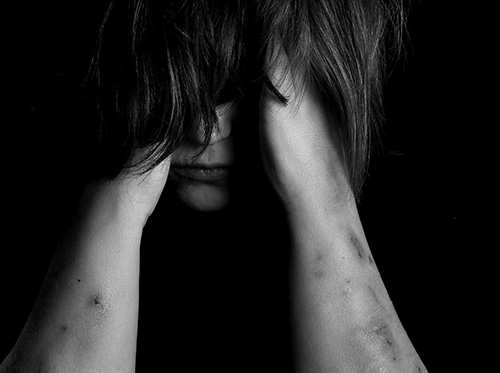
Self-Injury Awareness Month: Risk Factors, Signs, and What We Can Do About It
By: Ariela H. Rabizadeh, M.A., Doctoral Candidate in Clinical Psychology
Camino a Casa Doctoral Intern
The month of March highlights the prevalence and importance of learning about self-injury through Self-Injury Awareness Month. Self-injury, sometimes referred to as self-harm, is intentional, non-lethal behavior that causes physical injury to your body. Research from 2019 suggests that although rates of emergency department (ED) visits for self-harm in adolescents has declined in the past few years, pre-adolescents (15 years old and younger) in the United States are facing a significant increase in ED visits for self-harm. This is noteworthy as youth who engage in self-harm are at an increased risk for suicide, which is the second leading cause of death in young people. We could speculate that the risk for this vulnerable population is increasing with the current COVID-19 pandemic.
Relevant Terminology:
Both suicidality and non-suicidal self-injury (NSSI) may be actions that cause physical injury to one’s own body. Suicidality can be conceptualized as behaviors and thoughts related to suicide. NSSI, on the other hand, is not intended to end one’s own life; rather, NSSI can be understood as an action that is done for relief, to self-soothe, or to regulate emotions. (Cornell Research Program 2015)
In my experience treating youth, many have reported self-harming by using their own nails to scratch, carving tattoos into a deep layer of skin with pens, using an eraser until it burns the skin, and/or cutting with anything sharp (e.g., broken glass, hard plastic, exacto knives, kitchen knives, scissors, staples, razors).
According to Clinical Child Psychology and Psychiatry, youth have often expressed the following reasons for self-harm:
- To cope with difficult emotions
- To feel in control
- To punish themselves
- For relief or distraction from overwhelming feelings
- To express emotions or to feel heard
Some risk factors to NSSI and suicide thoughts and/or behaviors (cited by Cornell 2015):
- History of trauma, abuse, or chronic stress
- High emotional sensitivity and reactivity
- Lack of effective coping skills to deal with stress
- Feelings of isolation (even if it seems like they have a lot of friends
- Substance use history
- Depressive symptoms (e.g., withdrawing, sadness, not engaging in activities)
- Anxiety symptoms (e.g., irritability, difficulty controlling worry)
- Feelings of worthlessness
Some Signs of Self-Harm:
- Unexplained physical marks (e.g., bites, scratches, cuts, burns, bruises)
- Covering up with excessive clothing
- Withdrawn or isolated
- Bloody tissues
- Self-blame
Maintaining Safety:
- Lock up items they can harm with (i.e. sharps such as knives, scissors, and razors)
- Keep an eye on youth but avoid doing too much “policing” because this can increase self-harm
- Remember that self-harm is their way of coping so we cannot expect them to stop without learning replacement behaviors
- Do not punish or reward self-harm
- Communicate with your child – check in on them, validate their feelings, and listen!
- Do not get into a hostile confrontation with your child, stay calm
- Seek professional help
*Disclaimer: these lists are not comprehensive
How is Casa Pacifica Playing a Role in Intervention for Self-Harm?
At Casa Pacifica, clinicians are trained to provide dialectical behavior therapy (DBT) to target life-threatening behaviors, such as self-harm. We try to keep in mind that youth may want to do well, however they may not always have the skills to do so. In DBT, we focus on teaching coping skills to replace self-harm or other life-threatening behaviors. Some components of DBT the youth learn are:
- Mindfulness Skills – To gain awareness of ourselves and our emotions as the youth may often have a dysregulated sense of self
- Emotional Regulation Skills – To target the intense mood changes and mood-dependent behaviors by increasing positive emotions and reducing vulnerability to negative emotions
- Distress Tolerance Skills – To tolerate distress and uncomfortable emotions without escaping them or acting impulsively (i.e. self-harming)
- Interpersonal Effectiveness Skills – To get what we want and need by communicating effectively
- Walking the Middle Path Skills – To catch and reframe black and white thinking/inflexible/extreme thinking that may lead to overwhelming emotions and unsafe behaviors
- Diary Cards – To gain awareness of and track urges to discuss with assigned clinician. Our direct care staff are able to support youth completing their daily diary cards while also monitoring for safety concerns 24/7
Treatment is provided in individual, family, and group therapy, in conjunction with medication management, crisis intervention, skills coaching, parent psychoeducation groups, and a range of other therapeutic milieu activities (e.g., yoga, art, equine therapy, and more). In the Camino a Casa program, the primary goal is to stabilize youth’s life-threatening behaviors, such as self-harm, by helping them understand and address the issues that are causing them emotional pain which leads to the behavior. Then reintegrate them into their homes, schools, and community with the tools to maintain their safety.
For more information about the Camino a Casa program, please visit www.caminoacasa.org.
If in crisis, please contact 911 or go to the nearest emergency room
National Suicide Prevention Lifeline: 1-800-273-8255
Trevor Project: 1-866-488-7386
Crisis Text Line: text HOME to 741741
References:
Whitlock, J., Minton, R., Babington, P., & Ernhout, C. (2015). The relationship between non-suicidal self-injury and suicide. The Information Brief Series, Cornell Research Program on Self-Injury and Recovery. Cornell University, Ithaca, NY.
McCluskey, C. K., Allareddy, V., Rampa, S., Allareddy, V., & Rotta, A. T. (2019). Characterization of suicide and deliberate self-harm among children in the United States. Clinical Pediatrics, 58(1), 66-72.
Westers, N. J., & Plener, P. L. (2019). Managing risk and self-harm: Keeping young people safe. Clinical Child Psychology and Psychiatry, 25(3), 610-624.
Ougrin, D., et al. (2020). Pandemic-related emergency psychiatric presentations for self-harm of children and adolescents in 1- countries (PREP-kids): A retrospective international cohort study. SSRN Lancet.



